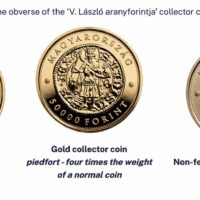Understanding forex market trends in the Hungarian economy
Sponsored content
Welcome to the Forex Market – a fierce, liquid marketplace trading over $5 trillion daily. While you may imagine busy trading floors, most activity takes place online. Influenced by diverse factors such as geopolitics and interest rates, it’s constantly changing.
Understanding the Hungarian Economy Essentials
Diving deep into the complexities of Forex variabilities in Hungary, it is essential to first grasp the basic pillars of the Hungarian economy. In 2020, Hungary displayed a robust GDP standing at $160 billion and has a distinctly lively economy that underwent significant transformations post the downfall of communism in 1989. The country’s economic canvas shifted from centralized planning to market-oriented forces, forging an attractive blend of high-value exports and foreign investments.
Hungary’s dynamic economic growth north of three decades can be seen sprawling across various sectors such as automobile production, pharmaceutical enterprises, IT developments, food process industries and leveraging renewable energy resources. Running parallel to this economic transformation has been a robust financial market structure mushrooming in the country, leading to several currency trading companies in Dubai taking notice.
Influence of Global Forex Trends on Hungary
In the global Forex market, Hungary is considered a tactical player. Hungary’s currency, the Forint (HUF), usually reflects both the global Forex trends and the health of the Hungarian economy. The Forint’s performance on the Forex markets is closely tied to influences from the Eurozone, mainly due to trade links and Hungary’s geographical proximity.
Significant political and economic events on the global stage have direct effects on the Hungarian Forex market. For instance, the Brexit referendum in 2016 led to increased volatility in European currencies, directly affecting the valuation of the HUF.
Noteworthy Forex Market Trends in Hungary
An important turning point for the Hungarian economy was the global financial crisis of 2008. The crisis revealed structural weaknesses in Hungary’s state finances, resulting in a dramatic devaluation of the HUF against major currencies. Since then, Hungarian authorities have undertaken an economic policy that values stability over growth, manifesting in a carefully managed floating exchange rate for the Forint.
One real-life example can be seen in the way the HUF responded to the COVID-19 pandemic. COVID-19 significantly affected global Forex markets, causing high currency market volatility worldwide. Hungary’s Forint depreciated by almost 10% against the Euro over March 2020, reflecting the changes in global risk sentiment.
Impact of Forex Trends on Hungarian Economy
Forex market trends can have a wide-ranging impact, from general economic health to the individual prosperity of citizens. In Hungary’s case, a weak Forint leads to increased cost of imported goods, thus impacting inflation. This scenario was particularly evident following the 2008 financial crisis when the HUF’s devaluation led to higher import costs.
On the flip side, a weakened HUF can be advantageous for Hungary’s export sector because Hungarian goods and services become more competitively priced on international markets. This hence boosts the profit margins of exporters and stimulates economic growth.
Emerging Technologies and Their Influence on Hungarian Forex
As technology continues to progress, its impact on Forex markets globally, and the Hungarian market specifically, is becoming increasingly profound. High-speed connectivity, artificial intelligence, and blockchain technology are pioneering the path for what might be the future of Forex trading.
Algorithms and sophisticated software provide real-time analysis of market fluctuations, providing traders with instant access to vital information, and thus potentially paving the way for even more dynamic and fast-paced trading. As technological penetration deepens within the Hungarian economy, a shift towards these advanced trading platforms will only add to the complexity and attractiveness of its Forex market.
Risk Management in Forex Trading
As lucrative as Forex trading can be, it also carries inherent risks. The high volatility of the Forex market requires traders to tread carefully and employ sound risk management strategies. Proper risk management involves setting realistic profit targets, managing leverage, limiting trade size, and a plethora of other factors.
In the Hungarian market, with its unique blend of factors shaping Forex trends, emphasis is placed on understanding the economic climate, geopolitical impacts, and potential market shocks like the 2008 financial crisis or the COVID-19 pandemic.
The Role of Regulatory Bodies in Hungarian Forex
The Hungarian National Bank (MNB) plays a pivotal role in overseeing the financial and Forex market trends in Hungary. A regulatory body ensures the stability of the national currency and maintains investor confidence.
The MNB stepped up its role following the financial crisis of 2008, setting monetary policies aimed at stabilizing the Forint and guiding sustainable economic growth. Its actions and directives significantly influence Forex trading in Hungary, rendering an understanding of their policies crucial for successful trading.
Conclusion
Examining Forex trends in Hungary reveals a fascinating mix of economic elements and global events. These, combined with trading technology advances and risk management, offer opportunities to both locals and global investors, despite the inherent market volatility. To succeed, remain updated and adaptable to these evolving trends.
please make a donation here
Hot news
Top Hungary news: Serbia partners with Paks, Christmas market prices, prison for commenting, traffic changes, HUF 50,000 coin – 19 November, 2024
Orbán cabinet: Relations between Hungary and the UK to further strengthen
Hungarian Foreign Minister Szijjártó: More people in Europe becoming reasonable about illegal migration
This Hungarian word has become known and used worldwide!
Contemporary Chinese art on display at Hungarian National Museum
Hungarian policy makers leave base rate on hold at 6.50pc




